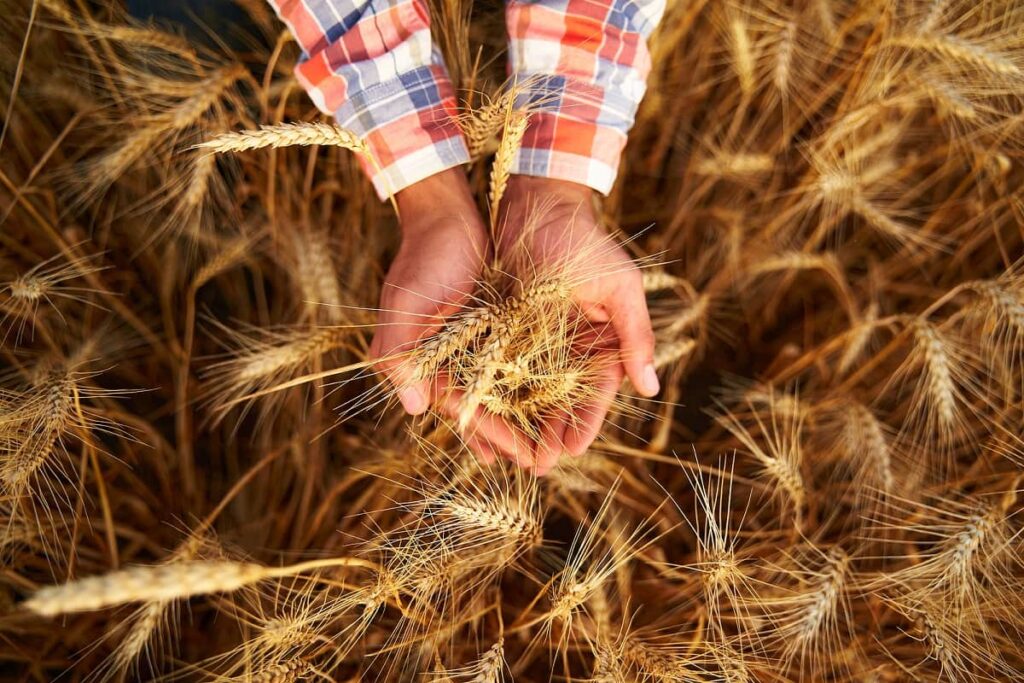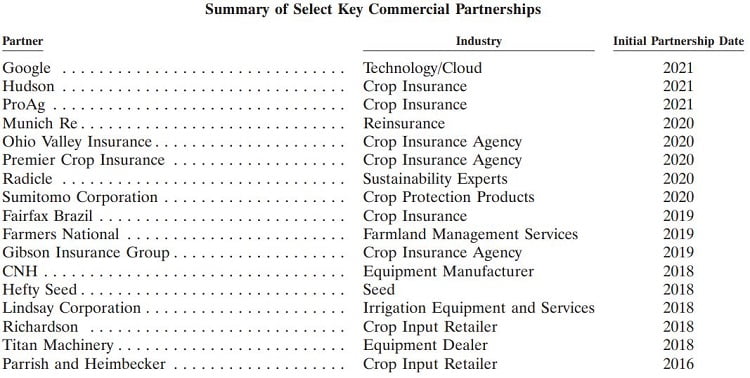Farmers Edge Stock is a Pure Play on Agtech Big Data
Table of contents

One of the most meaningful jobs one can spend their short time on this planet doing is found at the bottom of Maslow’s Hierarchy of Needs. It’s putting food on people’s tables. Farming is a difficult way to make a living, and consequently requires a great deal of intelligence to operate a profitable enterprise. Farmers make more than 50 key decisions in any single cropping season that can affect yields and bottom line, not to mention the unpredictability of the weather. In order to make better decisions, farmers are increasingly turning toward big data.
We’ve written extensively about agriculture technology (agtech), and most of the action seems to be in the private sector. For investors, there are plenty of agtech startups, but not so many publicly traded agtech stocks. After their recent IPO, Farmers Edge is now a publicly traded agtech firm with an aggressive claim – “no other company does what we do.” So, let’s see how that claim holds up.
About Farmers Edge
Similar to what we found in New Zealand, Canada is a country where agtech flourishes, something we covered in our piece on 8 Canadian Agtech Startups Helping Farmers Grow. Founded in 2005, Manitoba startup Farmers Edge (FDGE.TO) raised just over $103 million from investors that included Kleiner Perkins and Mitsui. All that money has been used to build a platform that generates high-quality datasets and transforms them into insights for farmers and their suppliers and customers. When it comes to traction, they’re now covering 23 million acres – an area that’s about the size of the entire State of Indiana – while analyzing three billion data points hourly during daylight hours. More than 3,000 growers across six countries are active subscribers on the Farmers Edge platform which brought in $36.7 million USD in 2020 revenues. Here’s a breakdown of the geographical distribution of revenues.

We first came across the company in our 2017 piece on 14 of the Top-funded AgTech Startups in which we talked about their software/hardware platform that helps farmers see exactly how their investment is showing a return. Most farmers run tight ships, so you have to show them their money is being put to good use. Adoption has been increasing at a rapid pace, with acres under coverage growing at a compound annual growth rate (CAGR) of +57% over the past four years. (After the below chart, which is in Canadian dollars, we’ll be using USD unless stated otherwise.)

For 2020, approximately 80% of their revenue was generated from recurring, subscription-based software solutions.
Data-Driven Farming
The Farmers Edge platform is accessible from a number of vantage points – as a web-based platform (for the office), mobile app (for the field), and on a universal terminal (for a live experience in the tractor cab). The big data behind the platform comes from soil moisture probes, telematics devices, location tracking devices, grain cart weighing devices, soil sampling, irrigation monitoring, satellite imagery (from Airbus), and even mini weather stations installed by Farmers Edge.

Pricing packages range from $1.50 CAD per acre for the basics up to $6.00 CAD an acre for all the bells and whistles, with customers historically subscribing to four-year contracts. In order to understand the value proposition, let’s look at an example of how farmers might benefit from what’s also referred to as precision agriculture.
The Farmers Edge Platform ROI
According to Farmers Edge, wheat farms across Saskatchewan, Canada which implement their solution yielded on average 15.3 bushels per acre more than the average yields of farms across the province in 2019 (according to Statistics Canada), an average 32% yield improvement. At a selling price of $5 per bushel of wheat, a Farmers Edge farmer can earn an additional $76.50 per acre per growing season. On a typical 2,000-acre farm, this would translate to roughly $153,000 of incremental revenue to the farmer, for an investment of only $12,000 (assuming all farmers are on the premium tier subscription), a +1,275% rate of return on that farmer’s investment. Since there are few variable costs associated with incremental bushels, each additional dollar earned goes directly to the farmer’s bottom line.
The Value of Big Farming Data
We’ve talked before about how the real value created by many companies is the big data they’re accumulating, Tesla being a good example of this. The massive amounts of data that Farmers Edge sends up to the cloud can be used for any number of use cases, one being insurance.
Farmers Edge separately markets and sells their Smart Claim software which allows insurance companies to access their big farming data to enhance policies and reduce claims management costs on a subscription and price-per-query basis (typically $1.50 per acre, per year). They’re also working with Munich Re, one of the largest global reinsurance companies, to create new insurance products with revenue linked to the value of policies signed. To decrease the cost to store all that data, they’ve partnered with Google as one of their first partners in agriculture technology. (Google has been having its own problems with bad apples lately.) Partnerships play a key role in how Farmers Edge has been able to grow their firm so quickly.
Channel Partnerships
Farmers Edge is unique in that they’re using channel partners to help sell their solution, generally targeting large-scale crops, primarily wheat, coarse grains, and oilseed crops. They attribute their market share in Canada of over 13% largely to the success of their channel partnership strategy. For example, Richardson, one of their largest partners, has an international presence and is Canada’s largest agribusiness, operating 93 agricultural business centers across Canada. Other key partners can be seen below.

Farmers Edge claims most of their competitors offer only simple analytics solutions which summarize or repackage information. The plan is to make selective acquisitions to supplement their organic growth.
We provide channel partners with the ability to compete directly with Bayer AG and John Deere without having to make major investments into their current and future digital platforms.
Farmers Edge is also using their economies of scale to reduce costs. Their new contract with Airbus for satellite imagery reduced costs of that input by 60% while their Google Cloud contract going into 2021 reduces platform hosting costs by around $2.9 million a year. The great thing about having a farmer run your operation is the cost consciousness on display. (The Founder and CEO of Farmers Edge, Wade Barnes, is a farmer himself.)
To Buy or Not to Buy
It’s refreshing to see an IPO that was priced at $17 CAD per share actually trading around that price. With a market cap of around $584 million USD, it falls short of our $1 billion market cap threshold. That’s about the only reason we wouldn’t consider a position right now. We couldn’t find any red flags in analyzing the company’s filing document, and plenty of reasons why the future looks bright for these clever farmers in Manitoba.
As we’ve discussed before, the real value in this business is in all the data they’re accumulating which can be used to generate more valuable insights which increases adoption which increases data which means better insights, etc. etc. (You’ll often see this referred to as “a flywheel.”) It’s easy to visualize any number of corporate events for Farmers Edge as larger agriculture firms that are falling behind the times seek out bolt-on acquisitions.
Conclusion
The agriculture industry accounts for 2.76% of global GDP and employs approximately one billion people. There’s a huge total addressable market, but it’s not an easy sale. In today’s world of agtech startups, you need to be a farmer to sell to farmers. You need to understand your customer and speak their language. You need to be out standing in your field to be outstanding in your field. Having a leader who truly understands farmers and farming is one of the things that makes Farmers Edge stand out above the rest.
We’re presently holding three green tech stocks in our portfolio of 31 disruptive tech stocks. Want to know which ones? Become a Nanalyze Premium subscriber and find out today.










